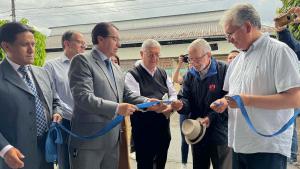Noticia
The IEEE Latin America Transactions journal published UPS research

The IEEE Latin America Transactions journal published three papers written by Esteban Inga, Alexander Aguila and Diego Carrión, all members of the Smart Grids Research Group. The papers are published in Volume 13 – Issue 8 from August 2015, in the IEEE virtual library Xplore and indexed in the SCOPUS data base and ISI.
• State of Art, Cognitive Radio for Virtual Network Operator on Advanced Metering Infrastructure by: Marcelo Camacho Vera and Esteban Inga Ortega.
This work has been developed according to the requirement of telecommunications for advanced metering infrastructure ( AMI ) in Smart Grid which is responsible for smart metering of electricity. The aim is to use a mobile virtual network operator to reduce leasing costs of primary frequency spectrum by not using the primary network operator, in this case the cellular network and through the concept of cognitive radio, using only white holes frequently used in phone and apply them in AMI.
• Design of Automatic Reclosing scheme in distribution feeders. By: Jorge Vasco Molina and Alexander Águila Téllez.
The aim of this paper is to find the mechanism to reduce power cuts at the level of the distribution network , for this, comparisons of events that have occurred and the most common faults where carried out. After identifying the causes of failures there was an alternative scheme arises to reduce outage time supplied by the electric network
• Characterization and modeling of the efficiency of photovoltaic systems. By Gabriel Salazar Diaz and Diego Carrión Galarza.
This project shows the quantification of the actual use of solar energy in photovoltaic generation systems, used to warn the ideal combination equipment enabling the production of electricity in homes because of the small space in the construction.
Contenidos Relacionados
Contenidos Relacionados
Noticias Relacionadas
Noticias Relacionadas





Follow us
Follow us